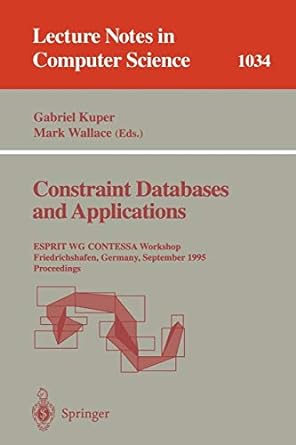What is the motivation for designing IPv6?
| | The depletion of IPv4 addresses |
| | New technology can bring new innovation |
| | New web technologies demand new IP addressing scheme |
| | IPv4 technology cannot accommodate network heterogeneity |
Flag this Question
Question 25 pts
Given the IP: 146.186.32.100 and Subnet Mask: 255.255.0.0, what is the network portion of this IP address?
Flag this Question
Question 35 pts
Given the IP: 192.168.32.100 and CIDR: /16, what is the host portion of this IP address?
Flag this Question
Question 45 pts
Given the IP: 192.168.32.100 and CIDR: /24, what is the host portion of this IP address?
Flag this Question
Question 55 pts
Given the IP: 146.186.32.100 and Subnet Mask: 255.255.0.0, what is the broadcast IP address in this network?
Flag this Question
Question 65 pts
Given the IP: 146.186.0.0/24, what is a valid host address in this network?
Flag this Question
Question 75 pts
Given the IP: 192.168.32.100 and CIDR: /16, what is the network portion of this IP address?
Flag this Question
Question 85 pts
Which is a valid IPv6 address?
| | 33FA:246E::AE0F::3829:245C |
| | 33FA:246E::AE0F:3829:245C |
| | 33FA:246E:0000::0000:AE0F:245C |
Flag this Question
Question 95 pts
An IPv4 address is divided into parts: ______ and _______.
Flag this Question
Question 105 pts
Given the IP: 146.186.32.100 and Subnet Mask: 255.255.0.0, what is the host portion of this IP address?
Flag this Question
Question 115 pts
What is the loopback address?
Flag this Question
Question 125 pts
IPv4 addresses are ______ bit binary numbers.
Flag this Question
Question 135 pts
| Destination | Mask | Next Hop |
| 120.130.55.0 | 255.255.255.0 | 120.130.55.10 |
| 54.87.0.0 | 255.255.0.0 | 54.87.10.10 |
| 128.1.0.0 | 255.255.0.0 | deliver directly |
| 92.63.0.0 | 255.255.0.0 | 92.63.10.10 |
| 92.63.20.0 | 255.255.255.0 | 92.63.20.10 |
According to the forwarding table above, what should the router do when it receives 92.63.30.3?
| | Forward the datagram to 92.63.20.10 |
| | Forward the datagram to 92.63.10.10 |
| | Deliver the datagram to a host in the network |
| | Forward the datagram to 120.130.55.10 |
Flag this Question
Question 145 pts
| Destination | Mask | Next Hop |
| 120.130.55.0 | 255.255.255.0 | 120.130.55.10 |
| 54.87.0.0 | 255.255.0.0 | 54.87.10.10 |
| 128.1.0.0 | 255.255.0.0 | deliver directly |
| 92.63.0.0 | 255.255.0.0 | 92.63.10.10 |
| 92.63.20.0 | 255.255.255.0 | 92.63.20.10 |
According to the forwarding table above, what should the router do when it receives 54.87.14.9?
| | Forward the datagram to 92.63.10.10 |
| | Deliver the datagram to a host in the network |
| | Forward the datagram to 120.130.55.10 |
| | Forward the datagram to 54.87.10.10 |
Flag this Question
Question 155 pts
There are one entry per ______ in the datagram forwarding table.
Flag this Question
Question 165 pts
| Destination | Mask | Next Hop |
| 120.130.55.0 | 255.255.255.0 | 120.130.55.10 |
| 54.87.0.0 | 255.255.0.0 | 54.87.10.10 |
| 128.1.0.0 | 255.255.0.0 | deliver directly |
| 92.63.0.0 | 255.255.0.0 | 92.63.10.10 |
| 92.63.20.0 | 255.255.255.0 | 92.63.20.10 |
According to the forwarding table above, what should the router do when it receives 92.63.20.3?
| | Forward the datagram to 92.63.10.10 |
| | Deliver the datagram to a host in the network |
| | Forward the datagram to 120.130.55.10 |
| | Forward the datagram to 92.63.20.10 |
Flag this Question
Question 175 pts
What does the router do when it receives a datagram that matches more than one entry in the forwarding table?
| | Forward the datagram to anyone entry that matches |
| | Use longest prefix match and forward it to next hop |
| | Remove all but one entry in the forwarding table and forward the datagram to next hop |
Flag this Question
Question 185 pts
IP datagrams are _________________.
| | Different depends on the Network Interface Layer protocol |
| | Different depends on the type of transmission media |
| | The same format regardless the underlying network |
| | Different depends on the type of network |
Flag this Question
Question 195 pts
Host A sends a datagram to host B through network #1 (MTU = 1000 bytes), network #2 = (MTU = 1200 bytes), and network #3 (MTU = 1500 bytes). What is the path MTU from host A to host B?
Flag this Question
Question 205 pts
Host A sends a datagram (length = 2200 bytes) to host B through network #1 (MTU = 1000 bytes), network #2 = (MTU = 1200 bytes), and network #3 (MTU = 1500 bytes). How many fragment(s) will be delivered to host B assuming there is no loss or duplicate?






